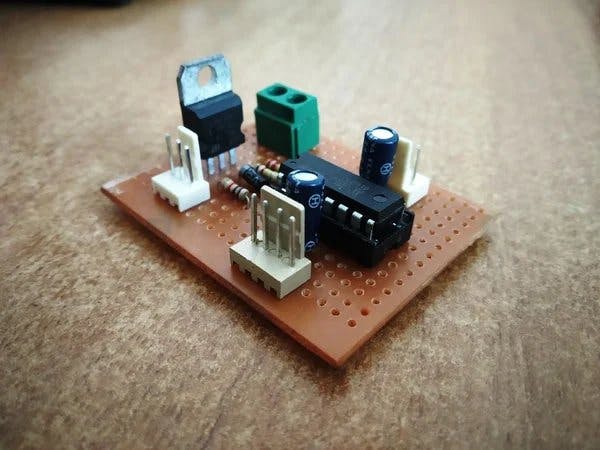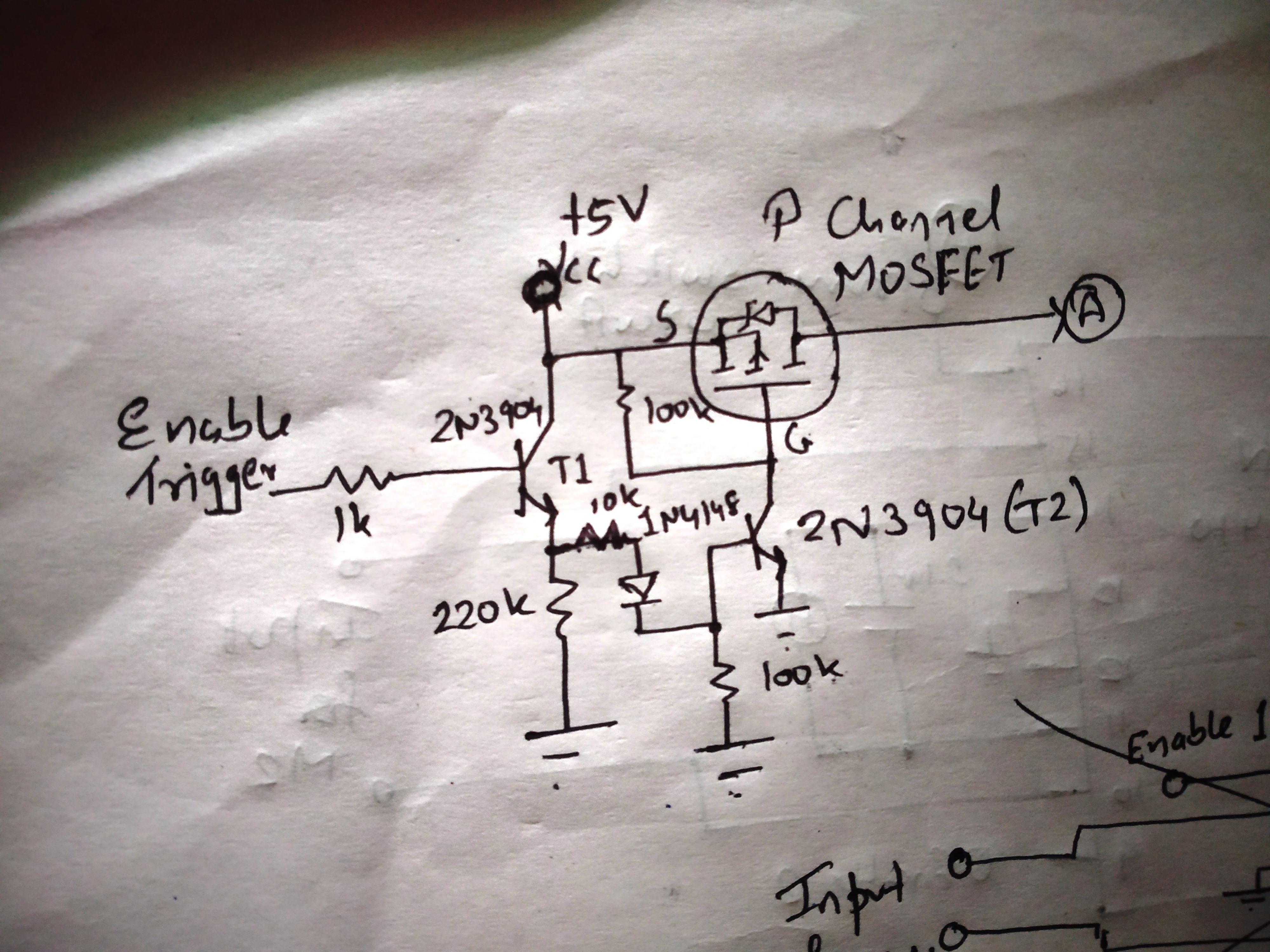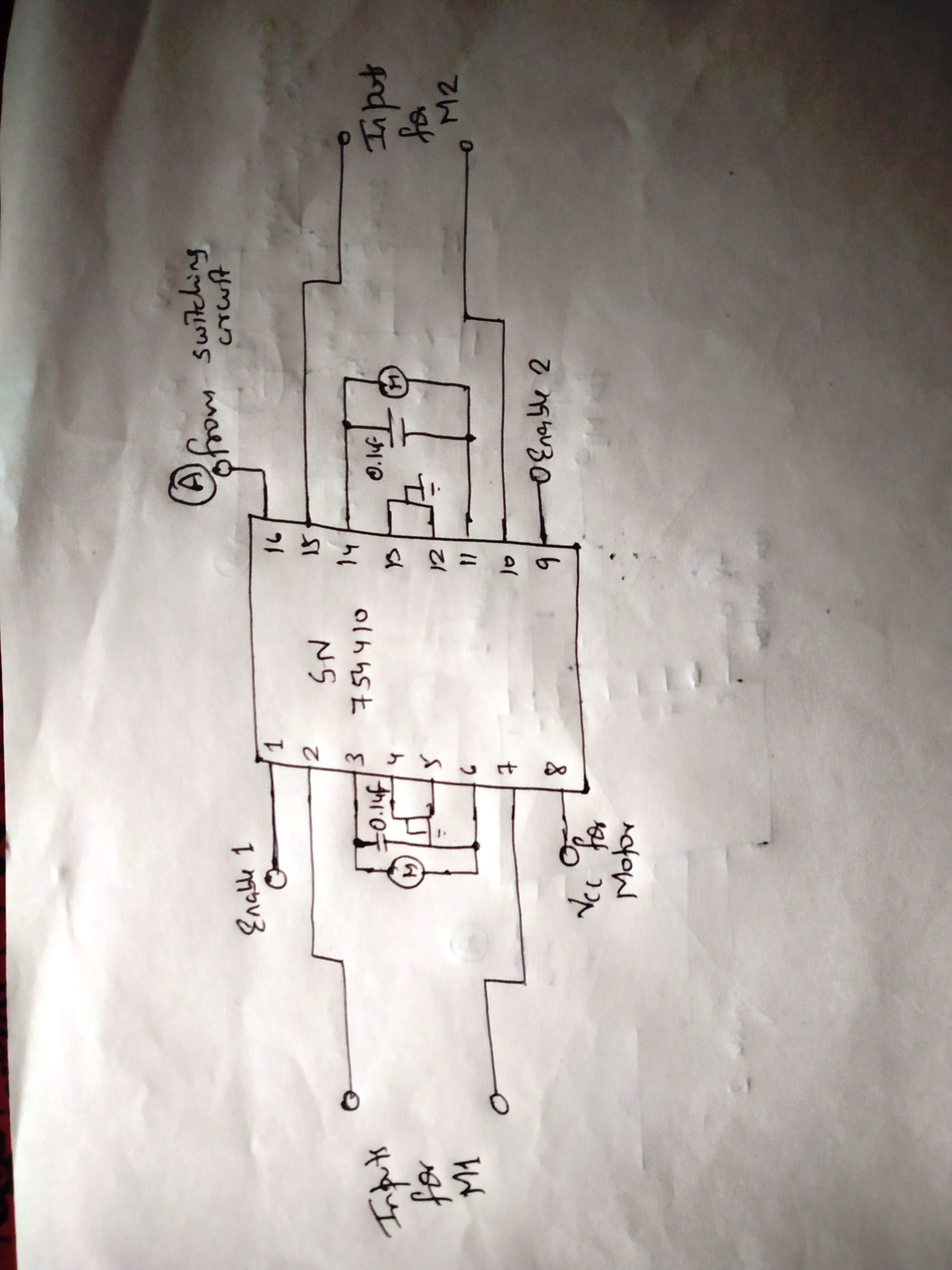The project presented is a stepper motor/motor driver circuit board with SN754410 motor driver IC including some power saving features. The board can drive 2 DC motors or a stepper motor with the help of dual H bridge circuit in the IC. SN754410 IC is being widely used for driving motors as it operates in wide range of voltage and can drive up to 1A current per channel.
The additional thing here is the power switching circuit which will cut off the power to IC, this can be very power efficient than normal sleep modes. It needs an external signal from controller to turn ON the power to the driver circuit. The switching circuit is built around a couple of NPN transistors and a P channel MOSFET which will let the power flow only when we apply pulse to the circuit.
Using the switching circuit, the power consumption of the motor driver circuit is nothing and by applying a HIGH pulse to the switching circuit, one could easily use this board normally. Moreover, the IC is also capable of driving other loads such as relays or solenoids. Thus, with the additional power switching circuit, the board can become a very handy tool for makers.
Power switching circuitThis circuit cuts off the power to the IC until it gets a high signal externally. For example, when using this circuit in a project like a PIR motion detector with Arduino, it will power Arduino when something is detected by the sensor and technically saying when the sensor sends a HIGH pulse. Here we are using this circuit in our motor driver board which will not let the power flow to the IC until a HIGH pulse is applied at the trigger pin externally saving majority of the energy while the driver is not needed.
The circuit is built around a P channel MOSFET and a couple of NPN transistors. When a HIGH pulse is applied to the circuit, transistor T1 becomes active and there is power reaching the base of transistor T2. So Gate pin of the MOSFET is pulled low and this allows the current to flow through the MOSFET and the board gets power.
Motor driver circuitThe circuit is very simple, we just need to follow the pin diagram of the motor driver IC. Generally two enable pins of the IC and 5V Vcc pin are connected so that outputs are enabled all the time. We need to connect the output of the switching circuit marked A in the diagram to the IC's Vcc pin. Moreover 0.1uF capacitors across the motor connections are preferred to stop the radiated electrical spikes.
Then we will use connectors so we can connect power supply and motors easily. Motor Vcc is connected via a different 2 pin screw terminal. 5V, GND and trigger are to be applied externally and for them a 3 pin connector is used. Then for input and output of motors and signals we will use two 4 pin connectors.
After soldering all the components and connectors, we have made a power efficient and very easy-to-use motor driver board. Now you can turn off the driver when its not in use and when you want it active, apply high pulse from your Arduino to trigger pin or any other controller and it's ready to use.






_ztBMuBhMHo.jpg?auto=compress%2Cformat&w=48&h=48&fit=fill&bg=ffffff)











Comments
Please log in or sign up to comment.